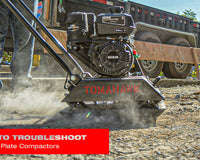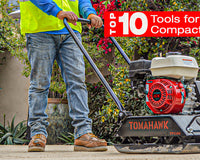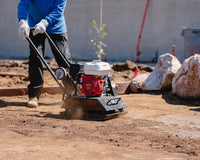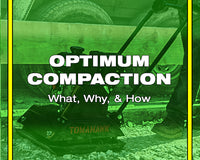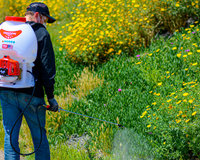Backfilling a trench is more than just tossing soil back into a hole. If done incorrectly, it can lead to uneven settlement, surface cracking, and long-term structural problems. Whether you're working on a utility line, retaining wall, or slab foundation, using the right compaction method and equipment is essential for a solid, lasting result. One of the most effective tools for this task is the jumping jack tamper—especially when you're dealing with narrow trenches and cohesive soils.
Why Use a Jumping Jack for Trench Backfilling?
Jumping jack tampers, also known as vibratory rammers, are uniquely suited for compacting soil in tight spaces. Unlike plate compactors, which use broad vibration across flat surfaces, jumping jacks deliver high-impact, vertical force in a compact footprint. This makes them especially effective for cohesive materials like clay or for reaching deeper fill layers where a wider machine wouldn’t fit. The 3 HP Honda Vibratory Rammer is an excellent example—lightweight enough for easy handling, yet powerful enough to drive compaction deep below the surface.
Preparing the Trench and Soil
Before you start compacting, make sure the trench is free of large debris, water, or loose rock. Soil should be returned to the trench in 6-8 inch lifts—thin enough for proper compaction but thick enough to make steady progress. Sandy soil and granular materials will respond more quickly to vibration, while clay will require more passes and possibly moisture adjustments to achieve optimal density.
As one site supervisor noted during a utility installation training,
"If you try to compact too much soil at once, even the best equipment won't save you. Small lifts, methodical passes—that's the key."
Operating the Jumping Jack Tamper Safely
Using a tamper like the 3.6 HP Honda Jumping Jack requires balance and attention. Start at one end of the trench and move backward in slow, overlapping passes. Avoid jerky motions or turning too sharply, which can destabilize the machine or cause uneven compaction. Always wear appropriate PPE—boots, gloves, and hearing protection—and be mindful of trench edges, especially if the area has not been shored or stabilized.
If compacting in layers, allow the soil to settle slightly between each pass before starting the next lift. This improves density and reduces the chance of future voids or depressions. With each lift, check for firmness underfoot or use a hand probe to ensure consistency.
Layering and Finishing Tips
While the jumping jack is excellent for the bulk of the trench, the top few inches may benefit from a smoother surface finish. At this stage, some crews transition to a small plate compactor—such as the 5.5 HP Honda Plate Compactor—to get a flat, polished layer for paving, concrete, or landscaping work.
Don’t forget to account for soil type: clay needs a bit more water to compact effectively, while sand compacts best when slightly moist but not wet. Avoid overwatering, as saturated soil can pump back up during compaction and destabilize the fill.
Reliable Tools Make the Work Easier
Jumping jack tampers are workhorses on any site where space is tight and compaction is critical. Their ability to compress deep, cohesive soils sets them apart from broader tools like rollers or plates. When paired with proper technique—small lifts, steady movement, and soil monitoring—they produce a dense, stable fill that lasts.
If you're managing a trench by hand and want dependable performance, machines like the Honda-powered Tomahawk rammers give you the force and control to do it right the first time. Whether you're a solo contractor or part of a larger team, learning how to use these tools effectively is key to long-term jobsite success.

